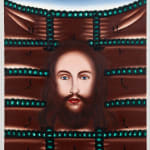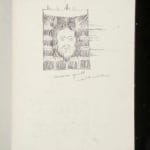-
Artworks
Roger Brown
Veronica’s Landscape, 1988Oil on canvas36 x 28 x 2 in
91.4 x 71.1 x 5.1 cm4869Further images
-
(View a larger image of thumbnail 1
)

-
(View a larger image of thumbnail 2
)

-
(View a larger image of thumbnail 3
)

-
(View a larger image of thumbnail 4
)

-
(View a larger image of thumbnail 5
)

-
(View a larger image of thumbnail 6
)

-
(View a larger image of thumbnail 7
)

-
(View a larger image of thumbnail 8
)

Brown had a complex relationship with religion. Born in the deep southern state of Alabama, the “fire and brimstone,” Bible-thumping fundamentalism of the southern Church of Christ was a significant...Brown had a complex relationship with religion. Born in the deep southern state of Alabama, the “fire and brimstone,” Bible-thumping fundamentalism of the southern Church of Christ was a significant aesthetic and ideological foundation of his youth. Despite being gay in an exceptionally conservative religious context, Brown’s relationship with the Church was not purely antagonist, and he even initially attended a seminary university in Nashville with the intent of becoming a minister. Leaving the program after only a single year, Brown would enroll at the School of the Art Institute of Chicago in the early 1960s, directing the course of his life definitively towards the pursuit of the arts.
Art and religion remained entwined for Brown rather intimately. Many of his reflections on the art world filtered through Biblical themes, such as a painting from 1986 which retells the story of Noah, suggesting that the flood would come to wipe away the art world.
In 1988, the same year as Veronica’s Landscape, Brown produced a work featuring Christ defenestrating an abstract expressionist piece from a gallery, recalling the story of Christ cleansing the Temple of merchants and money changers. More quietly pastoral, Veronica’s Landscape has an ambiguous and atmospheric vision of Christ as embedded in the land itself, perhaps a nod to the belief of some American protestant denominations that America itself is the true homeland for Christians, a long-lost transatlantic Eden.Provenance
Artist Studio, Chicago
Phyllis Kind Gallery, Chicago
Roger Brown Study Collection, Chicago
Kavi Gupta, ChicagoLiterature
Saint Veronica was moved with pity when she saw Jesus carrying his cross to Golgotha and gave him her veil that he might wipe his forehead. Jesus accepted the offering, held it to his face, and then handed it back to her—the image of his face miraculously impressed upon it. This piece of cloth became known as the Veil of Veronica.
-
(View a larger image of thumbnail 1
)







